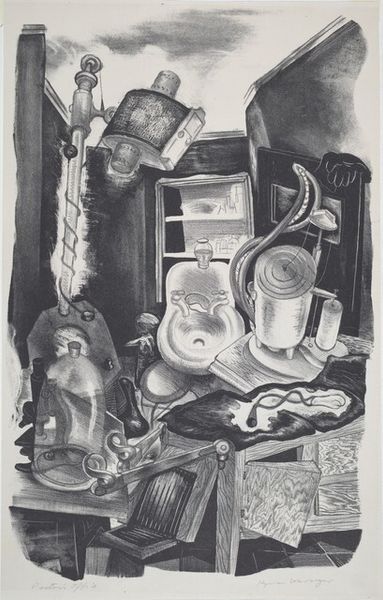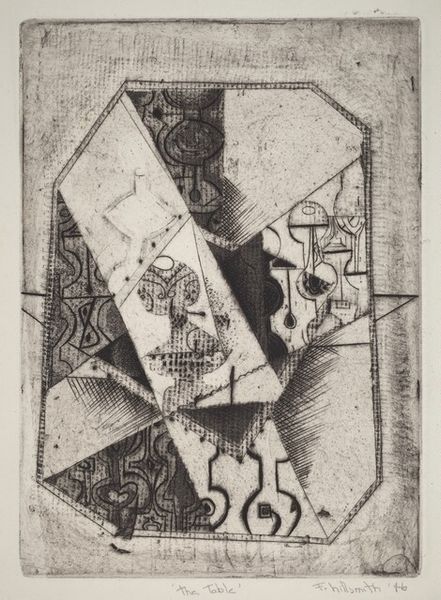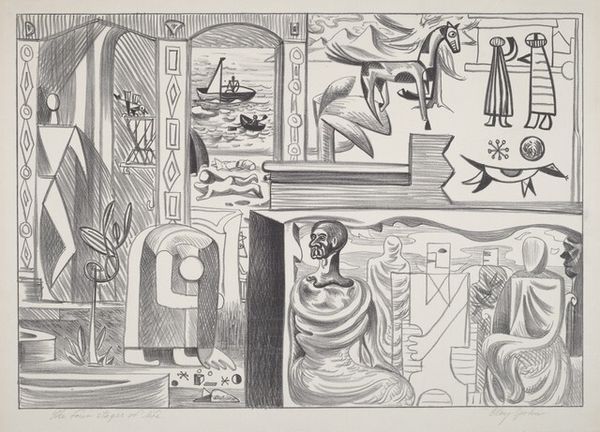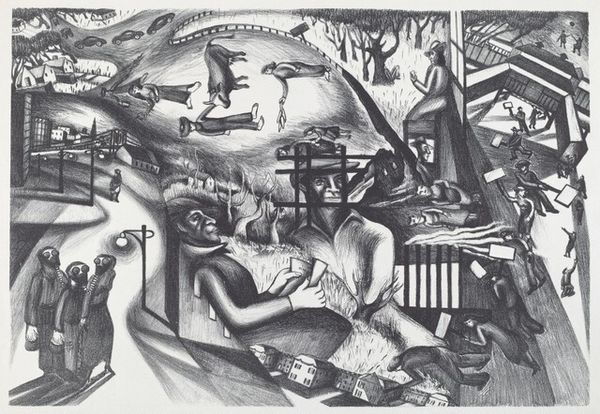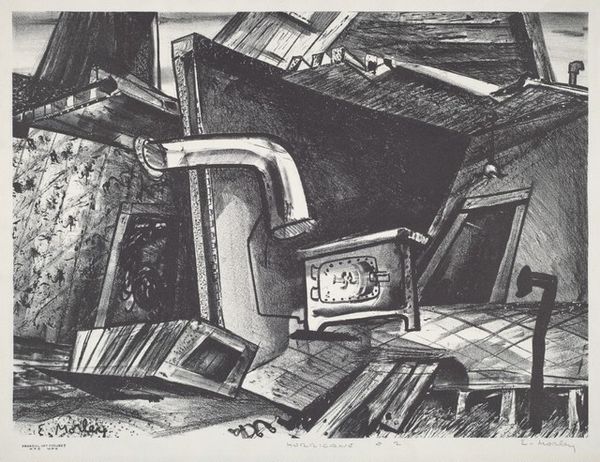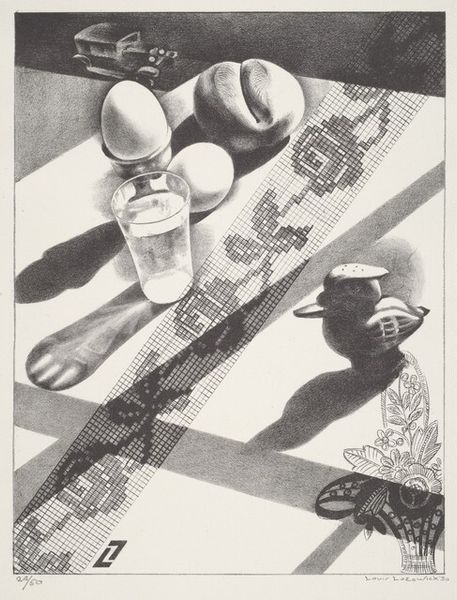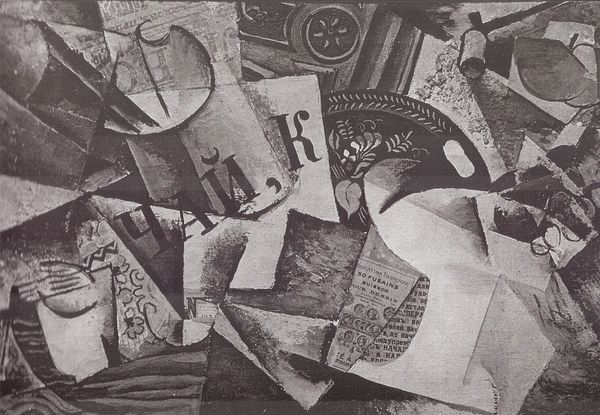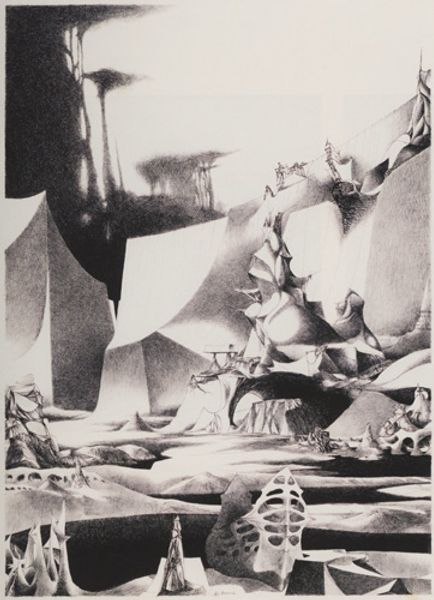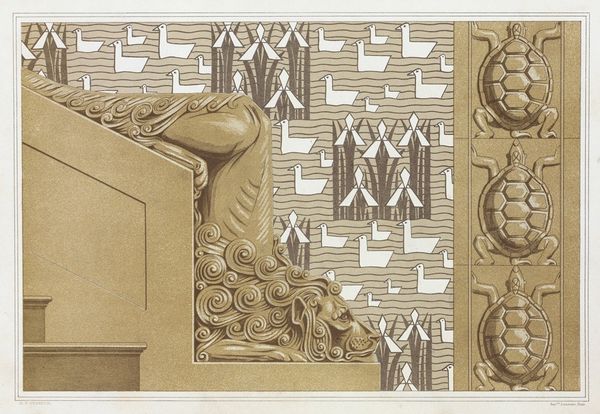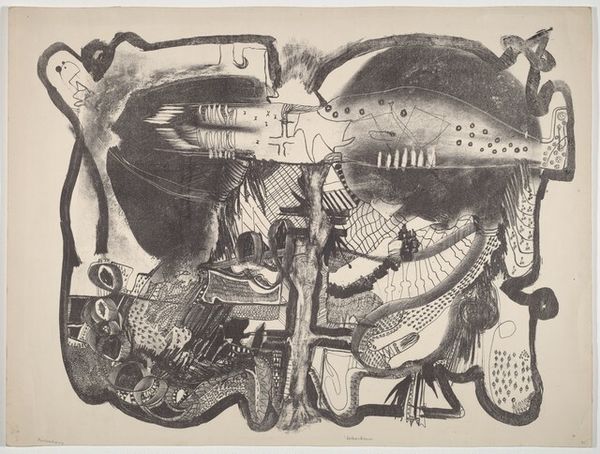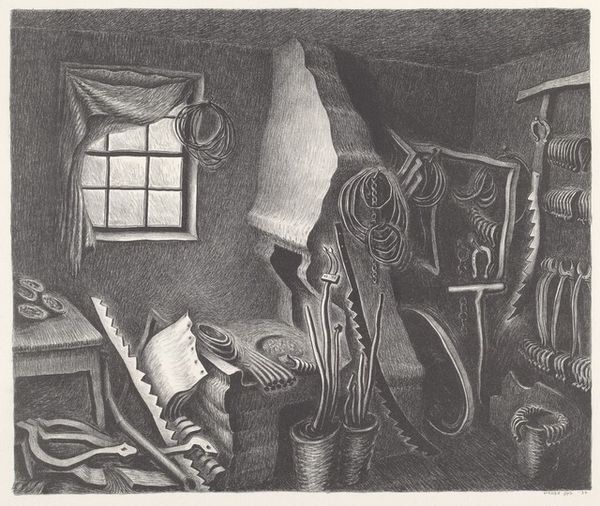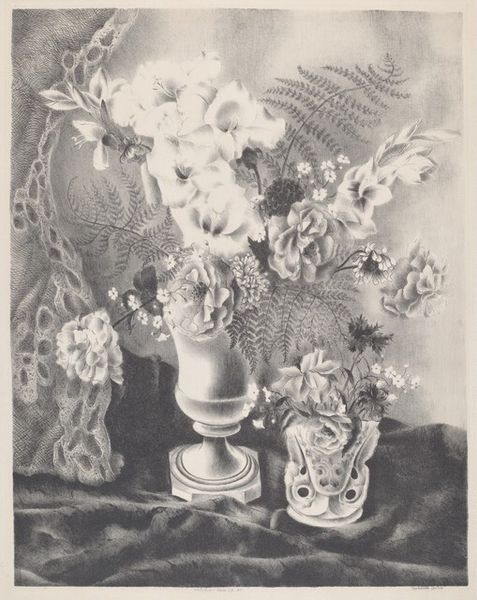
drawing, print, paper, ink
drawing
paper
ink
geometric
surrealism
surrealism
Copyright: M.C. Escher,Fair Use
Curator: Escher’s "Reptiles," printed in 1943, is quite the optical puzzle. What’s your first take? Editor: The still life setup is intriguing. It's all rendered meticulously in ink and paper, with such deliberate choices of materials—this suggests a meditation on creation, process. It feels calculated. Curator: Indeed. Consider the tessellated reptiles morphing into three-dimensional creatures—the Ouroboros! Escher’s work, steeped in symbolism, constantly points to cycles, the eternal return. The print holds potent mythical weight, referencing the self-devouring serpent. Editor: But that ouroboros feels incredibly contained, literally pinned to the paper, almost as though the alchemical act is being studied on the page like a process on a circuit board. There’s labor involved, but it’s not celebratory of a raw transformation, more scientific. Look at the shadows, so carefully shaded. Curator: Escher had that eye for precision. What's captivating here is that this "becoming" is contained in an otherwise quite ordinary, bourgeois still life – the open book, a bottle…he is making the extraordinary spring from the ordinary. Editor: And yet, all these very commonplace objects are clearly man-made, crafted with precision. I’m especially curious about that book labeled, "Natuurkunde." Does this choice comment on the nature of creative expression? Curator: The open book and the hatching reptiles may reflect the natural world rising up. Perhaps his inclusion of science textbooks invites inquiry to the way one defines the 'natural' – a cycle between science and symbolism, abstraction, and the physical objects right in front of us. Editor: Fascinating to observe how Escher uses materials to illustrate intellectual tensions. From the graphite trace to printed shape, and back again, what begins in craft terminates as thought. Curator: A dizzying array of interpretation— thank you. I appreciate you offering the ways Escher's process echoes through this potent symbolic visual cycle. Editor: Indeed!
Comments
No comments
Be the first to comment and join the conversation on the ultimate creative platform.
